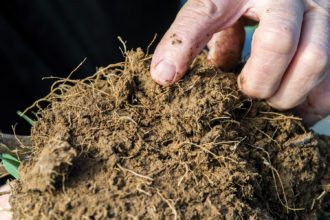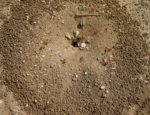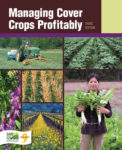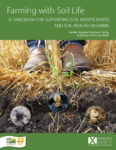Healthy soil is fundamental to a thriving farm. It provides the essential base for robust crops and productive forage, underpinning efficient nutrient cycling and water management. Organic farmers enhance soil quality through strategic practices such as cover cropping, conservation tillage, crop rotation, compost application, and managed grazing.
Written by Valerie Dantoin of Northeast Wisconsin Technical College, the guide Soils: A Practical Guide for Organic Farmers and Gardeners o offers an ecological and hands-on perspective on soil science. It provides practical insights for both farmers and gardeners on critical aspects, including soil testing, fertility management, composting techniques, erosion prevention, and integrating organic practices to foster long-term soil vitality. This resource can be particularly valuable for small-scale operations committed to sustainable growing methods.

Based on SARE’s book, "Building Soils for Better Crops", by Fred Magdoff, and developed with support from a $13,794 NCR-SARE Professional Development Program grant, the guide explores how soil functions as a living system, highlighting the physical, chemical, and biological processes that support plant growth. It was developed in conjunction with their Organic Ag. Academy to give high school and technical college teachers in-depth training to increase their knowledge and awareness of sustainable and organic agriculture and the tools to teach this topic to their students.
“Come with me as we explore the undiscovered country of soil,” says Dantoin. “I’ll be your tour guide along with Fred Magdoff and Harold van Es (who wrote the SARE portions of this book). I will try to pass along what I learned from my guides Henry Foth, Emmett Schulte, Elaine Ingahm, and Rick Adamski. I hope that you will come to see soil as a beautiful, underappreciated country that gives its gifts to all. It is from the soil we were formed - it provides the food that becomes us - it is to the soil that we will return someday.”
Want more information? See the related SARE grant:
- Organic Ag. Academy (ENC19-175)
This material is based upon work that is supported by the National Institute of Food and Agriculture, U.S. Department of Agriculture through the Sustainable Agriculture Research and Education (SARE) program. Any opinions, findings, conclusions, or recommendations expressed in this publication are those of the author(s) and should not be construed to represent any official USDA or U.S. Government determination or policy.




